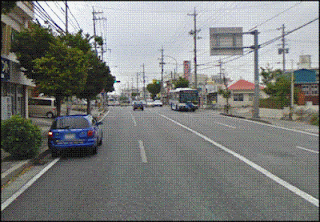Venture out to the Islands Surrounding Okinawa
 |
| Ferry to Zamami Island |
While Okinawa is a beautiful island, and has many things to see and do, nearby islands also offer unique experiences and adventures. Tokashiki, Ie, Izena, and many more islands are just waiting to be explored and enjoyed.
These islands are just miles off the coast of Okinawa and can usually be reached in an hour or two by ferry. You can go for just a day trip, or turn it into a few days. Accommodations are usually available, but planning ahead is a good idea..
Each of the islands around Okinawa have unique cultural opportunities to experience ranging from foods to language. There are many beautiful sights to see, including some of the best beaches and snorkeling in the world. If you thought Okinawa had great snorkeling, try some of the less touched nearby islands.
What Islands to Visit Around Okinawa
 |
| Ie Island |
Almost all of the islands surrounding Okinawa are worth visiting. Some islands are more geared to expensive getaways, while others are much more rural. Do a little research on accommodations and information about the island you want to visit before you get there so you have a better idea of what to do.
But if you don't know what island to visit, here is some help for you:
Ie Island - One of the closest islands with just a short ferry ride from Motobu. There are a variety of things to do on this island including renting mopeds, climbing the iconic mountain in the center of the island, camping on the beach, and staying in fancy resorts. Here is some more information getting to Ie island.
Iheya Izena Island - Located a little north-west of Okinawa, these islands are fairly rural, and provide wonderful cultural and traditional experiences. Be sure to make reservations in advance if you plan to stay the night, although a day trip is also possible. Ferry leaves from Nakajin village, north of Nago, daily and takes about an hour.
Kerama Islands - Made up of Tokashiki, Zamami, Aka, and Geruma islands, this is one of the best places in the world for snorkeling and especially scuba diving. There are many tours that go from Okinawa out to the Kerama islands just for diving. The daily ferries leave from Naha port. Each of the islands offers some different opportunities, so look at what each offers, and plan your trip accordingly.
 |
| View of the Ocean around Zamami Island |
There are many more options for island adventures around Okinawa, but these are a good start. Information and resources can sometimes be hard to come by, but asking others about their island excursions can yield great information.
If you happen to want a more exclusive getaway, Ishigaki Island and Surrounding Islands can only be reached by a i hour plane flight from Naha, and present a wonderful weekend, or week long vacation.
To get to the islands around Okinawa, there are a variety of ferries that leave from ports around the island. Naha is the main port, but if you are traveling to islands north of Okinawa, the ports on Motobu and beyond are where you will need to go.
We hope this information will help inspire you to go beyond Okinawa, and enjoy some of the exciting adventures on the surrounding islands.
If you're looking for summer activities, look no further than our list of Things to do on Okinawa. You might also find our 7 Essential Words and Phrases useful.
Leave a comment if you have questions.













